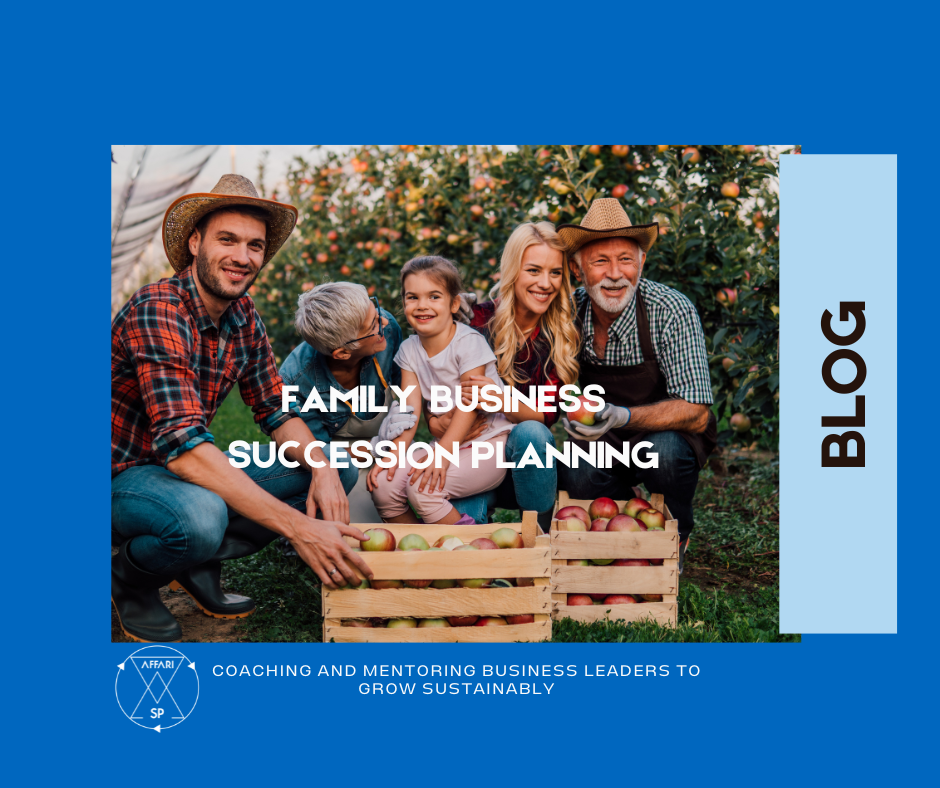Family Business Succession Planning: Balancing Family Governance, Dynamics, and Legacy
Author: Sara Pantaleo
Family businesses are vital to the global economy, accounting for over 60% of all private-sector employment and generating over 50% of global GDP. However, only about 30% of family businesses make it to the third generation, and only 10% to the fourth generation. One of the biggest challenges that family businesses face is succession planning.
Succession planning is identifying and developing the next generation of leaders for a family business. It is essential to start succession planning early, even if you are not planning to retire for many years. This is because it takes time to identify, train, and develop a successor. Creating a family business that will continue for generations takes more than wishing it to happen.

When developing a succession plan for a family business, it is vital to consider three key factors:
Family governance
This refers to the structures and processes that are in place to guide the family business. Family governance should be designed to promote transparency, accountability, and fairness. It should also be flexible enough to adapt to changing family dynamics and business conditions.
Family dynamics
Family businesses are often complex systems with various relationships and interests at play. Understanding the family dynamics when developing a succession plan is essential to ensure it is fair and considers all stakeholders’ needs.
Legacy
Many family business owners want to preserve their legacy for future generations. A succession plan can help to ensure that the family business continues to thrive and that the family’s values are upheld.

Here are some tips for developing a successful family business succession plan:
- Start early – at least 5 to 10 years before succession
- Succession planning is not a one-time event. It is a continuous process that should start as soon as the business is founded.
- Develop your successor’s skills
- Involve the family
- Succession planning is not just about the business. It is also about the family. It is essential to involve all family members in the succession planning process, even if they are not directly involved in the business.
- Understand the next generation’s interest – do the children and grandchildren want the gig?
- Involve the children early and be a positive role model.
- Eliminate entitlement – set expectations about how kids will participate in the business and set guidelines about how the business will employ them.
- Be transparent
- Succession planning can be a sensitive topic. Being transparent with family members about your goals and expectations is essential.
- Be flexible
- Family dynamics and business conditions can change rapidly. Developing a succession plan that is flexible enough to adapt to change is vital.
- Prepare to let go; do not hold on too tight
- Let go and let the successor make some mistakes while you are still around, and gently let go
- Get professional help
- Succession planning can be a complex process. It is often helpful to get professional help from a qualified advisor.
Family governance and dynamics are essential when developing a family business succession plan. Family governance should be designed to promote transparency, accountability, and fairness. It should also be flexible enough to adapt to changing family dynamics and business conditions.
Legacy is another critical consideration. Many family business owners want to preserve their legacy and see themselves as stewards for future generations. A succession plan can help to ensure that the family business continues to thrive and that the family’s values are upheld.
Challenges and Pitfalls
It is a delicate balance between business interests and family harmony. A lot of conflicts may arise when the discussions commence, and it is crucial to consider processes on how a conflict will be resolved. Open and transparent communication within the family is vital, and conducting family meetings and fostering effective discussions will be beneficial.

Here are some specific tips for incorporating family governance, family dynamics, and legacy into your family business succession plan:
- Develop a family constitution
- A family constitution is a document that outlines the family’s values and principles, as well as the rules and procedures for governing the family business. It can be a helpful tool for ensuring that the family business is managed fairly and transparently.
- Create a family council
- As the family becomes more extensive, you may consider a family council. A family council is a group of family members responsible for overseeing the family business and ensuring the family’s values and principles are managed. The family council can also play a role in succession planning by identifying and developing the next generation of leaders.
- Establish a family foundation
- A family foundation is a non-profit organisation that can be used to support the family’s values and legacy. The family foundation can be used to fund charitable activities, as well as to provide scholarships and other educational opportunities to family members.
By incorporating family governance, family dynamics, and legacy into your family business succession plan, you can increase your business’s and your family’s chances of success.
I worked in a family business for over twenty years and developed my skills through experience. When I work with family businesses now, I do it from a more objective lens as I am not emotionally invested, which helps families get more clarity and direction.
If you want to discuss this further, contact me for a non-obligation discussion.
Family Business Succession Planning: Balancing Family Governance, Dynamics, and Legacy Read More »

